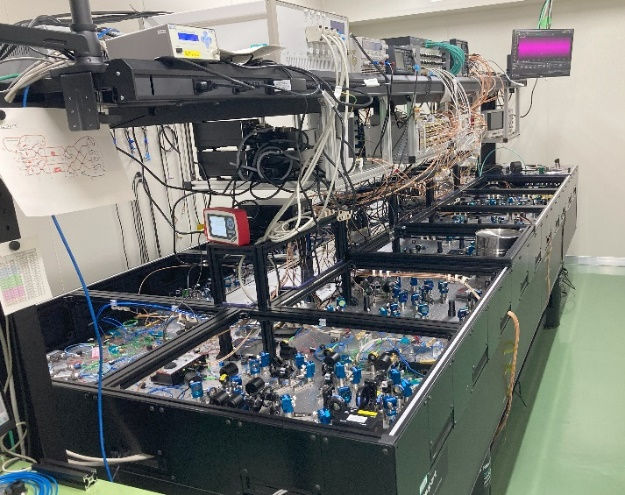R&D Project

Goal 6 R&D Projects (Selected in 2020)Development of Large-scale Fault-tolerant Universal Optical Quantum Computers
Project manager (PM)FURUSAWA AkiraProfessor, School of Engineering, The University of Tokyo/Deputy Director, Riken Center for Quantum Computing, Riken
Summary of the project
We develop our own quantum lookup table method to realize large-scale fault-tolerant quantum operations. By 2050, we aim to realize a large-scale optical quantum computer that can operate at room temperature. Generating experimentally fault-tolerant logical qubits, we will attain all quantum gates (quantum operations) necessary for general-purpose quantum computation fault-tolerant. For this purpose, we develop the techniques of squeezed light with a squeezing level sufficient to exceed the fault-tolerance threshold with a sufficient bandwidth to perform time-domain multiplexing, and optical quantum computer modules for stable optical quantum computation. And furthermore we develop a superconducting photon number discriminator for an arbitrary quantum state generator that generates logical qubits.
The picture below shows an optical quantum computer, which has been built by assembling all of the technologies we have developed. We are also preparing faster optical quantum computers, and are ready to develop software technology to enable them to operate as cloud computers.

Fig.1 A photograph of an optical quantum computer.
Milestone by year 2030
We will carry out research and development to build a fault-tolerant large-scale general-purpose optical quantum computer partially with an electrical signal processing system. For this purpose, we will apply the continuous quantum teleportation developed by ourselves and has become the world standard, and use the method of time-domain multiplexed general-purpose optical quantum computing. We choose cluster states, a fully entangled quantum state to preform quantum computation. The cluster state is generated using squeezed light. Since we want to make the squeezing level of quantum light as low as possible, we aim to reduce the requirements for qubits resulting in further lowering the fault-tolerance threshold values. We will then, start toward the next target; a fault-tolerant all-optical quantum computer that uses only optical signal processing without the electrical signal processing system.
Milestone by year 2025
Using time-domain multiplexed general-purpose optical quantum computing technique, we develop a waveguide optical parametric amplifier without cavity structures to generate broadband squeezed light. The aimed squeezing level is higher than that is currently achieved in a narrow band using a resonator. We aim to generate squeezed light of 8 to 10 dB covers terahertz bandwidth by the waveguide optical parametric amplifier we are developing. In this way, we will generate quantum entangled light that exceeds the quantum fault-tolerance threshold toward the realization of a fault-tolerant all-optical quantum computer.
R&D theme progress reports
- [1] Research and development on time-domain multiplexed general-purpose optical quantum computer
- [2] Research and development on superconducting photon number discriminator
- [3] R&D of waveguide optical parametric amplifiers and optical quantum waveguide circuits
- [4] Research and development on social implementation of optical quantum computer
- [5] Research and development on cloud computing and operation of optical quantum computers ※This theme has concluded as of September 2025.
- [6] Research and development on photon number counters with high detection efficiency and high counting rete made of Titanium superconductors
- Progress Report (954KB)
Performers
| Theme [1][4] | FURUSAWA Akira | The University of Tokyo |
|---|---|---|
| Theme [2] | TAKAHASHI Hiroyuki | The University of Tokyo |
| Theme [3] | HASHIMOTO Toshikazu | NTT, Inc. |
| Theme [5] | HIRAOKA Takuji | Fixstars Amplify Corporation ※This theme has concluded as of September 2025. |
| Theme [6] | FUKUDA Daiji | National Institute of Advanced Industrial Science and Technology |
PDF Download
- Summary of the project (211KB)